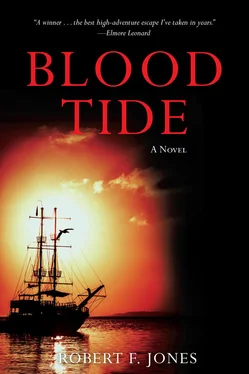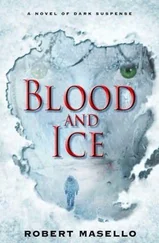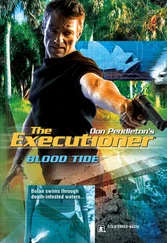Robert Jones - Blood Tide
Здесь есть возможность читать онлайн «Robert Jones - Blood Tide» весь текст электронной книги совершенно бесплатно (целиком полную версию без сокращений). В некоторых случаях можно слушать аудио, скачать через торрент в формате fb2 и присутствует краткое содержание. Год выпуска: 2014, Жанр: Старинная литература, на английском языке. Описание произведения, (предисловие) а так же отзывы посетителей доступны на портале библиотеки ЛибКат.
- Название:Blood Tide
- Автор:
- Жанр:
- Год:2014
- ISBN:нет данных
- Рейтинг книги:5 / 5. Голосов: 1
-
Избранное:Добавить в избранное
- Отзывы:
-
Ваша оценка:
- 100
- 1
- 2
- 3
- 4
- 5
Blood Tide: краткое содержание, описание и аннотация
Предлагаем к чтению аннотацию, описание, краткое содержание или предисловие (зависит от того, что написал сам автор книги «Blood Tide»). Если вы не нашли необходимую информацию о книге — напишите в комментариях, мы постараемся отыскать её.
Blood Tide — читать онлайн бесплатно полную книгу (весь текст) целиком
Ниже представлен текст книги, разбитый по страницам. Система сохранения места последней прочитанной страницы, позволяет с удобством читать онлайн бесплатно книгу «Blood Tide», без необходимости каждый раз заново искать на чём Вы остановились. Поставьте закладку, и сможете в любой момент перейти на страницу, на которой закончили чтение.
Интервал:
Закладка:
Wind almost due E tonight. We’re angling back up to 10°N lat., dodging atolls along the way. Among them Bikini—bomb tests, partial freedom for the female mammae—Eniwetok and Kwajalein, where Culdee says you’d better not even get onto their radar scopes or the navy will blow you out of the water. Still some top-secret shit going down out there. Once we get to 10°N, it’ll be latitude sailing the rest of the way to Surigao Strait.
Freddie seems very relaxed and happy tonight—loose-jointed, almost slack at the hips, grinning a lot. Probably got laid in Majuro. There’s teenage hookers all over the place, some of them in cribs that look like chicken coops, others balling their johns in the rubbish-filled ditch behind the shopping center parking lot. All clapped up as hell, no doubt. Hope Freddie didn’t get the drips. Ah, youth, said the old whore with the heart of gold.
Relieved Freddie at the helm shortly before midnight, and he swaggered below, humming some sugary ditty in Filipino. When my eyes adjusted to the night, I saw Culdee hunkered in his blanket up on the main hatch cover. He was throwing knots and staring steadily southward. “What do you see down there?” He didn’t bother to look around. “That’s where the Fat Lady died,” he said at last. The Fat Lady? Probably one of his old girl friends.
The Fat Lady was a bimbo all right, but a tough one. Wake Island’s ghosts were fading as the Venganza moved west, their signals breaking up, garbling, growing dimmer and dimmer with each noon sun line. Now Culdee heard other ghosts calling, from far to the southwest. He knew their voices from of old. They were the dead men of the U.S.S. Neosho , an ugly, ungainly fleet oiler whose nickname in the prewar Pacific Fleet was the Fat Lady.
Culdee’s great mentor in his younger days had been a warrant boatswain named Will Boyne. They’d served together in three ships, from Korea on up until Boyne’s retirement just before the Vietnam buildup. They’d pulled countless wild liberties together over the years, and even more midwatches. Boyne had been in the old Neosho . (In Culdee’s time there was a new Neosho , but she had no legend; when a sailor mentions the old Whatever-She-Was , you can be sure a sea story’s in the offing.) Boyne was in her from Pearl Harbor to the Coral Sea. It was there that the Fat Lady died.
“We’d been lucky at Pearl,” Boyne told him one night. “We’d just finished pumping avgas and tied up starboard side to, heading seaward, at the head of Battleship Row, when the first Jap wave came in. Kates and Vals—torpedoes and bombs. We were out of there before they could hit us. That was the end of our luck. Early the next May we were down in the Coral Sea, south of the Solomons and east of the Aussie coast as part of Fletcher’s Task Force 17. Once again we’d just finished fueling, and Fletcher detached us to keep us out of harm’s way. The Japs were hunting his carriers but hadn’t found them yet. They found us instead.
“That was the next day, the seventh of May. We had a single can for escort, the Sims . A Jap scout plane spotted us just after morning chow. At first they sent over high-level bombers—three waves of them. But their bombs fell wide. Then came the Vals—a whole skyful of dive-bombers. That was about noon. They clobbered the Sims on the first pass, three direct hits with five-hundred-pounders. Broke her back. She started going down stern first, and when the water hit the top of her stack, she just went kaboom. Jumped ten, twenty feet out of the water. There were parts of guys all over the place. Only fifteen survivors.
“Meanwhile about twenty Vals hit us. I saw in the action report later that they scored seven direct hits and eight near-misses, but nobody I knew was counting. One of the Vals—maybe a suicider, even that early in the war—plowed right into the number four gun mount on the port side, killed all the guys there and hosed burning gas down the deck where they were treating the wounded. The CO passed the word, ‘Make all preparations to abandon ship.’ Some people thought he just said ‘Abandon.’ They started dumping life rafts over the side, even lowered two whaleboats from the davits before they were stopped. But plenty of men had already gone over the side. After what they’d seen happen to the Sims , they didn’t want to be on the Fat Lady when she blew. They climbed into the rafts and watched.
“We’d pumped out the day before, fueling the task force, and we wouldn’t sink—we couldn’t sink. A lot of us wished we could. The Japs kept coming in, again and again, and when their bombs were gone, they strafed us—dead in the water. That was terror. A talker on the bridge got so petrified he kept the button pressed on his sound-powered phones, and we could hear him babbling up there, praying, telling how the XO was burning to death right there on the bridge, a Jap tracer had set fire to the kapok in his life jacket, and he was burning up there. I was the talker on the five-inch mount. There was a big-bellied, tough old first-class in the gun crew who’d been telling us all along what chicken-shits we were and how brave he was. After about the third or fourth strafing run he broke and dived under the gun mount. But because of his big gut, he was crammed in there pretty tight. When we trained the mount around to track the next target, the gun-platform ground him to bellyburger.
“Most of our people took it pretty well, though. During a lull in the bomber passes, some gunner up on another mount started a carnival spiel. ‘Oh, come, come, come in and see the Fat Lady! See her quiv-v-v-er as she laughs. See her boobies bobble like washtubs. Count her double chins! Come one, come all! Come in and see the Fat Lady! Bring the missus.’ Some guys were actually laughing. It gets that way.
“Then the Japs went home. We drifted for four days, patching up the wounded, burying the dead. The men and the life rafts that had gone over the side early in the fight disappeared during the first night. There were sixty-eight of them. Only three lived through it. Finally, on the fourth day, about noon again, another plane came over. That was the ultimate moment of woe. We knew it had to be another Jap. But it was a PBY—one of ours. A Catalina. That afternoon another can—the Henley —came over the horizon and found us. We scuttled the Fat Lady right there, in the middle of the Coral Sea, and watched her go down. There were a hundred and twenty-three of us left.”
“Tough duty,” Culdee said finally, wondering where he would have hidden when the Vals came down.
“Tough duty,” Boyne agreed. He grinned at Culdee in the tropical mid-Pacific dark, out there on the wing of the bridge. Out there on the hatch cover, forty years later . . . “That’s why I quiver when I laugh.”
EIGHTEEN

Commodore Millikan was the fourth of that line in these troubled waters. The first, and certainly the best (since it was he who gave the name its magical resonance), was a vengeful, tightly wound young ensign fresh out of Annapolis whose PT boat was sunk off San Lázaro during the Japanese takeover of the Philippines at the outset of World War II. His real name was Edgar L. Downes, but in the Sulu Sea the locals called him Milikan, as they did all Americans. The extra l slipped in there thanks to a yeoman’s typing error at the Office of Naval Intelligence. No harm done. It sounded more American spelled that way. It made for better cover.
The original Millikan organized a ragtag fleet—hence the title commodore—of local small craft—the slim, fast outriggers called pump boats, heavier trading vessels known as kumpits , and long-hulled, brightly clad sailing canoes called vintas. He armed them with weapons stolen from Japanese bases at Jolo and Tawitawi in the Sulu archipelago and wrought great havoc among the enemy. His sailors for the most part were Tausuq Moslems, a warlike, freedom-loving, seagoing people who had dominated the Sulu for generations—pirates, slavers, smugglers, afraid of nothing.
Читать дальшеИнтервал:
Закладка:
Похожие книги на «Blood Tide»
Представляем Вашему вниманию похожие книги на «Blood Tide» списком для выбора. Мы отобрали схожую по названию и смыслу литературу в надежде предоставить читателям больше вариантов отыскать новые, интересные, ещё непрочитанные произведения.
Обсуждение, отзывы о книге «Blood Tide» и просто собственные мнения читателей. Оставьте ваши комментарии, напишите, что Вы думаете о произведении, его смысле или главных героях. Укажите что конкретно понравилось, а что нет, и почему Вы так считаете.












